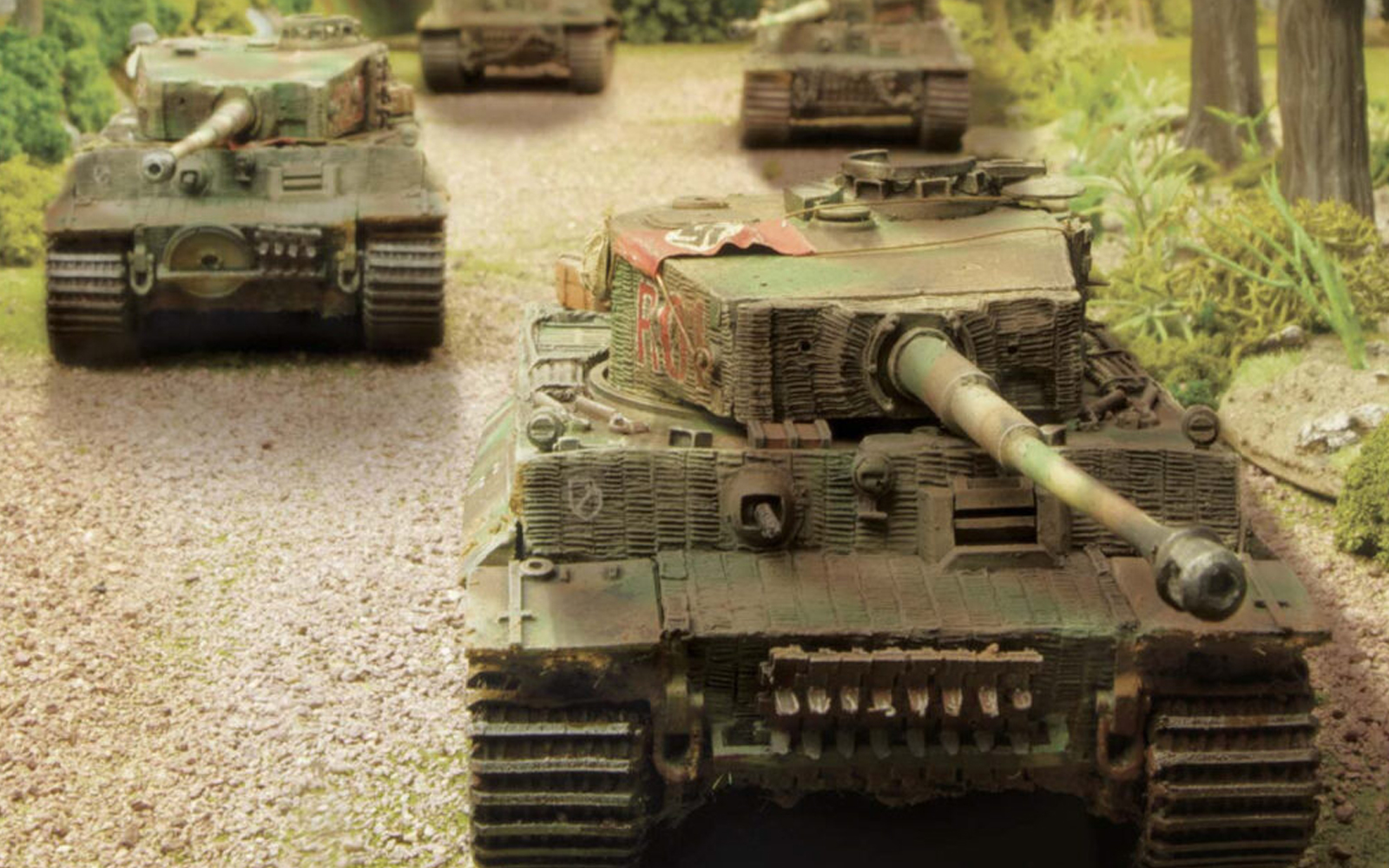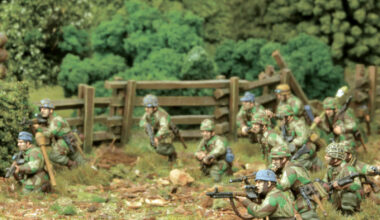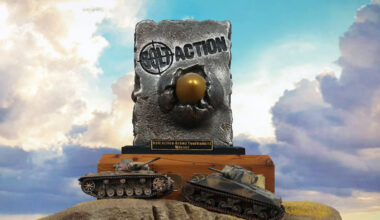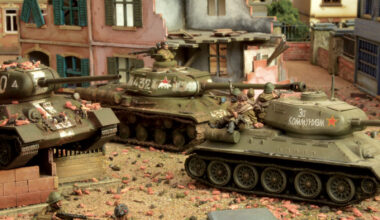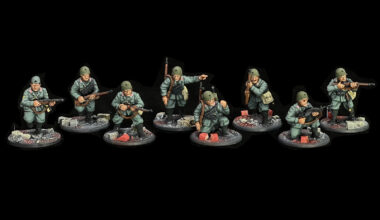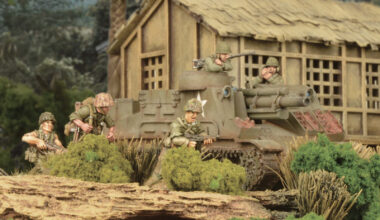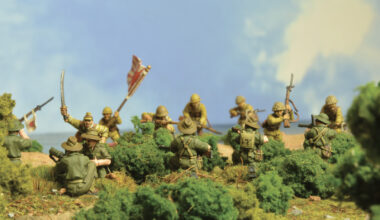This battle is perhaps most well known due to the extraordinary actions of a famous German tank commander, Michael Wittmann. In the span of 15 minutes his unit would be responsible for destroying over 13 tanks, two anti-tank guns and over a dozen transport vehicles – with most of these kills going to Wittmann himself. However, the battle had greater implications, both for the invading Allies and the German forces.
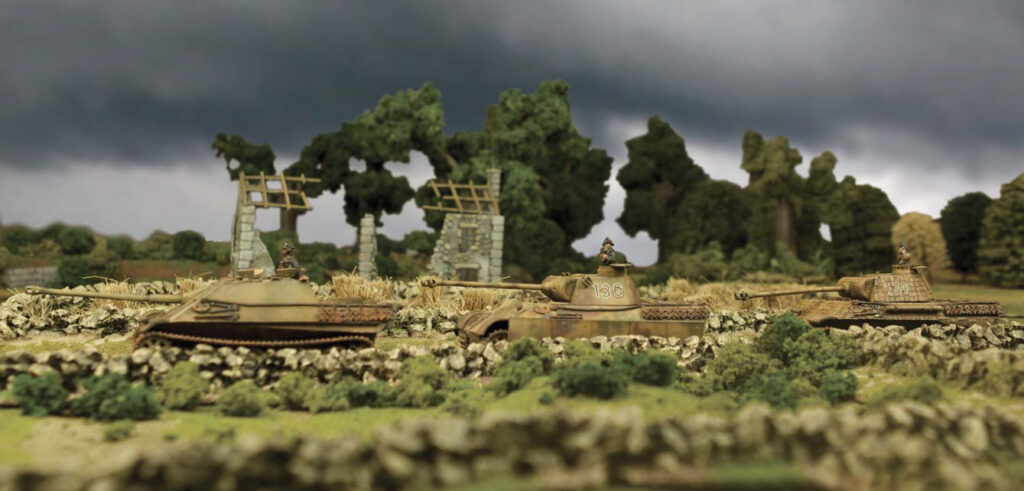
Michael Wittmann
“He was a fighter in every way, he lived and breathed action.”
SS-Obergruppenfuhrer Josef Dietrich
Known as ‘The Black Baron’, Michael Wittmann (pronounced ‘Vittmann’) was a model soldier, courageous fighter and widely considered to be the best tank commander of World War II. This is s a bold statement to make, especially given the fact that his kill count is lower than Kurt Knispel’s – 138 to Knispel’s 168. But kill counts only tell part of the story.
Background
As the Allies continued to bring more troops over the beach in the days following D-Day, it was clear to the defending Germans that the city of Caen would be an early target. It lay right between Juno and Sword beaches, had usable airfields, and unlike most of the area its fields weren’t flooded.
Indeed, the British coming from Sword beach had Caen set firmly in their sights. At 9 miles inland, it was an ambitious target for day one of the invasion. While resistance on Sword beach was relatively weak, the advance soon ground to a halt when the 21st Panzer Division attacked the British in force.
While the British would eventually repel the German counter-attack, their momentum was nonetheless stalled. The push towards Caen would resume on D+1. The British had planned on overrunning the city’s defences swiftly before enemy reinforcements could arrive. The Germans were one step ahead. They regarded Caen as critical to their ability to maintain an effective military presence in the Cotentin Peninsula. As such they quickly filled it with troops.
The British ran straight into the Panzer Lehr Division – one of the German Army’s most powerful armoured formations. The idea of quickly taking Caen was beginning to look more and more unlikely as the British advance ground to a halt outside the town. However, there was a glimmer of hope for the Allies. The US First Army and British XXX Corps had been delivering quite a beating to the Germans to the west of Caen. A seven and a half mile hole in the German lines had been opened up. By exploiting this breach in the enemy lines, the Allies could bypass Caen’s western defences. The Germans, now surrounded, might be inclined to retreat or even surrender. The potential upside made this too good a chance to pass up.
The British 7th Armoured Division – the Desert Rats – were given the mission of punching through the gap and securing the town of Villers-Bocage. It is unclear whether there were communication problems or other errors, but for some reason much of the division spent 12th June still advancing towards their earlier objective of Tilly-sur-Seulles. These issues were quickly dealt with, however, and the division’s 22nd Armoured Brigade was soon on its way towards the gap. By the end of the day, the 22nd was hunkered down for the night near La Mulotiere. Their plan was to attack in the morning, and take the ridge overlooking Villers-Bocage, occupying Point 213, the highest point of the ridge. The first elements to advance, the 4th County of London Yeomanry, would pass right through the town and head straight for the ridge. The 1/7th Queen’s Royal Regiment (West Surrey) would be next, occupying the town itself. Finally, the 5th Royal Tank Regiment would take up a similar point of high ground to the southwest.
The Germans had plans of their own. If the town didn’t receive reinforcements, it would eventually fall. The reserves were mobilized and brought into the area on 12th June. These reserves consisted largely of the 101st SS Heavy Panzer Battalion, which counted Michael Wittmann amongst its company commanders.
Wittmann was already a household name in Germany, having knocked out over a hundred enemy tanks. The 101st had arrived in France only a few months before. On their way to Villers-Bocage they lost more than half of their tanks to Allied air attacks and mechanical failures. By the time Wittmann was in place with his company, he had only six tanks under his command – half of the number he normally took into battle.
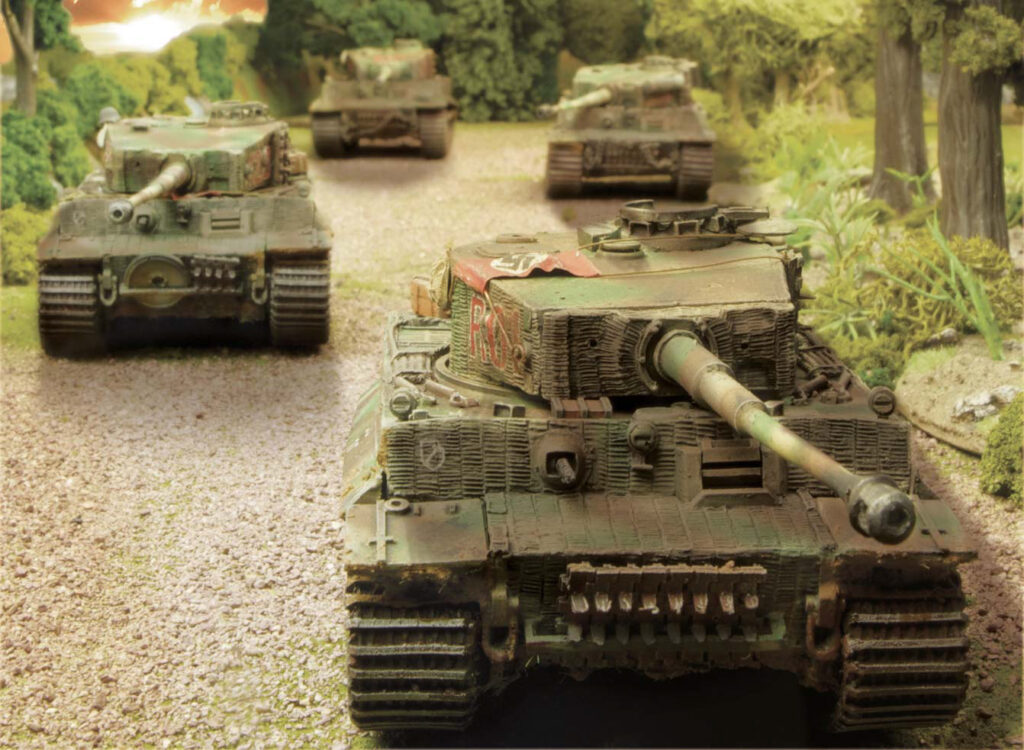
The Black Baron Rides Forth
On the morning of 13th June, the British advanced into Villers-Bocage. Aside from chasing away a few German reconnaissance elements, they encountered no resistance. They entered the town to the cheers of the French locals. They set up a perimeter around the town and waited for the inevitable German counter-attack.
The men advancing towards Point 213 did so without any advanced reconnaissance. This is something pointed out as being odd in hindsight. Wittmann had placed the remnants of his company at the base of the ridge under Point 213, and as such stood right in the way of the approaching British. He had characteristically hidden his tanks among the foliage, covering them with tree branches to further conceal them. The British were advancing into a trap.
Wittmann had expected a British move through his area, but he had not expected it so soon. Elements of the 4th County of London Yeomanry were barrelling down the road towards his position, and he knew it was only a matter of time before he was spotted. He had to decide at once what to do.
His next actions have been described as either selflessly heroic or brash bordering on irresponsible. He told the other tanks to hold their position, and he charged the British in his formidable Tiger tank. The British were understandably taken by surprise at the sight of a lone Tiger appearing as if from nowhere.
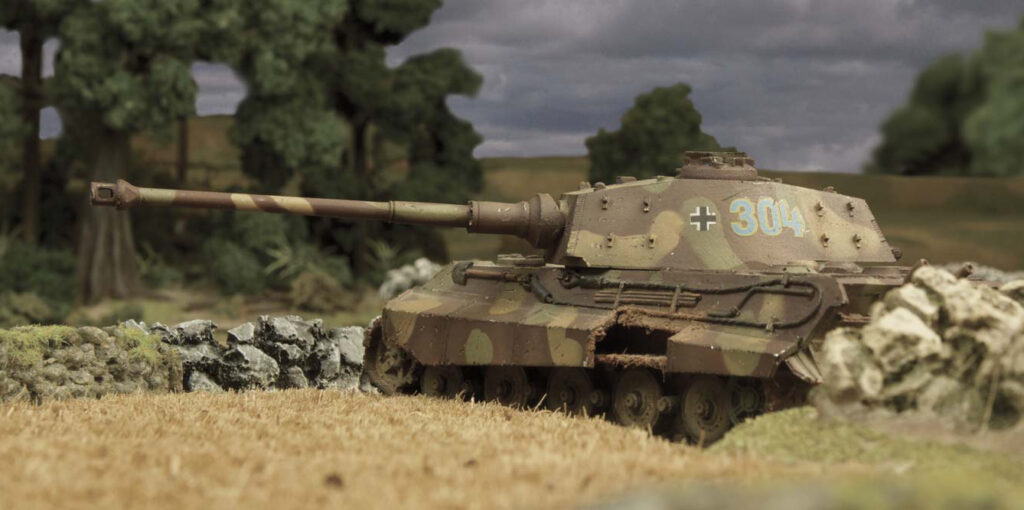
Wittmann charged the line of tanks, knocking out the last one in the line – a Cromwell. It was quickly reduced to a smoking wreck, and since it was in the back of the British line, its carcass prevented the rest of the tanks from withdrawing, as well as hampering any reinforcement efforts up that road.
Wittmann destroyed five tanks during his incredible charge, but he wasn’t finished. He went straight into Villers-Bocage, while the British tried desperately to bring their anti-tank weapons to bear. Their efforts would prove futile, as Wittmann’s tank would simply overrun their position and force the outgunned infantry to seek cover.
Once in the town, he continued to pummel the hapless British, destroy a dozen more tanks and several anti-tank guns and other vehicles. Much of the British arsenal seemed useless against the thick-armoured behemoth, simply glancing off its armour without causing any real damage.
Only a lucky shot to his tank’s treads finally put an end to his wild assault. Wittmann and his crew escaped their vehicle and made it back to their HQ on foot, evading the British patrols in the area.
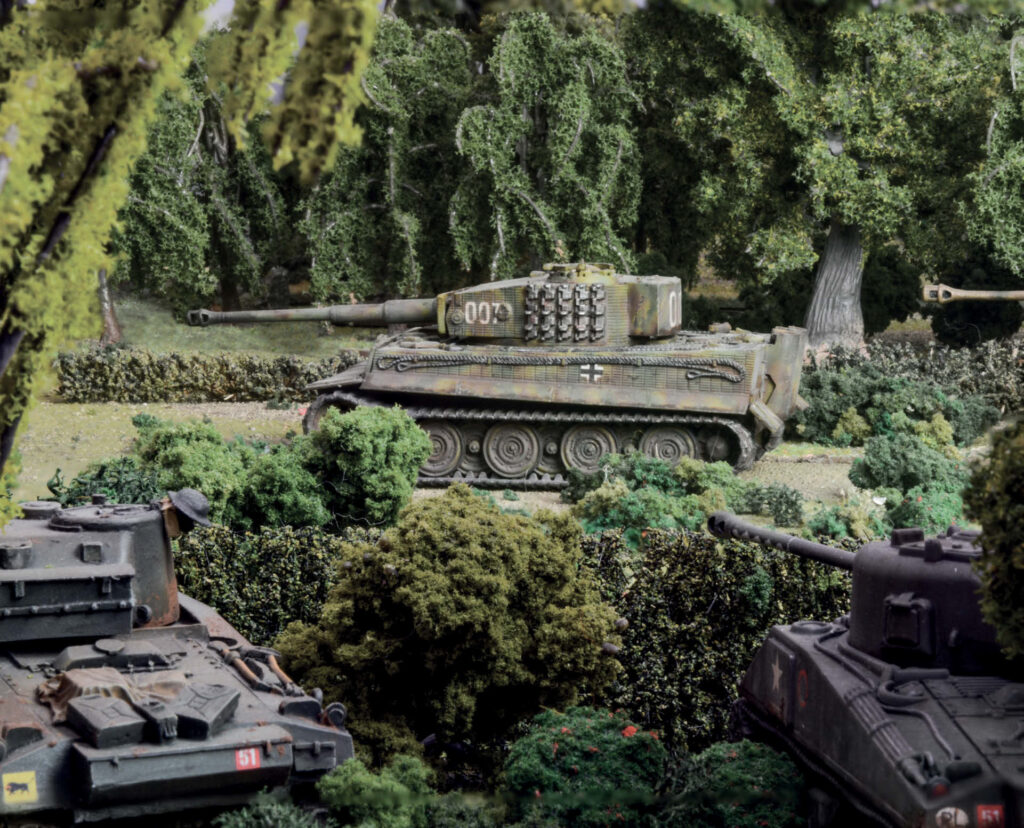
While much has been said of Wittmann’s intrepid attack, many feel that the British handed him a gift by not using standard procedures for supporting tank advances with accompanying infantry elements. Also, the order not to send reconnaissance elements towards the ridge has often been called into question. If the British had spotted those elements of the 101st SS Panzer Division, and had they brought a more conventional combined arms approach when reacting to them, the outcome could have been very different.
Likewise, Wittmann’s charge has its fair share of detractors. Had he been taken out shortly after his initial successes, it would no doubt cast his effort in a different light. Also, some have put forth the theory that had he coordinated his assault with other elements, the damage he inflicted would have been magnified, and perhaps the battle would have ended right then and there.
Regardless of what has been debated about this action, his daring and skill that day stand out as an impressive example of just how much of a difference a single element can make in warfare. It also stands out as one of the most remarkable tank actions of the entire war. In the span of 15 minutes he had knocked out 14 enemy tanks, 15 personnel carriers and two anti-tank guns. For his efforts, Wittmann was promoted to SSHauptsturmführer (captain) and awarded swords to his Knight’s Cross of the Iron Cross by Adolf Hitler himself.
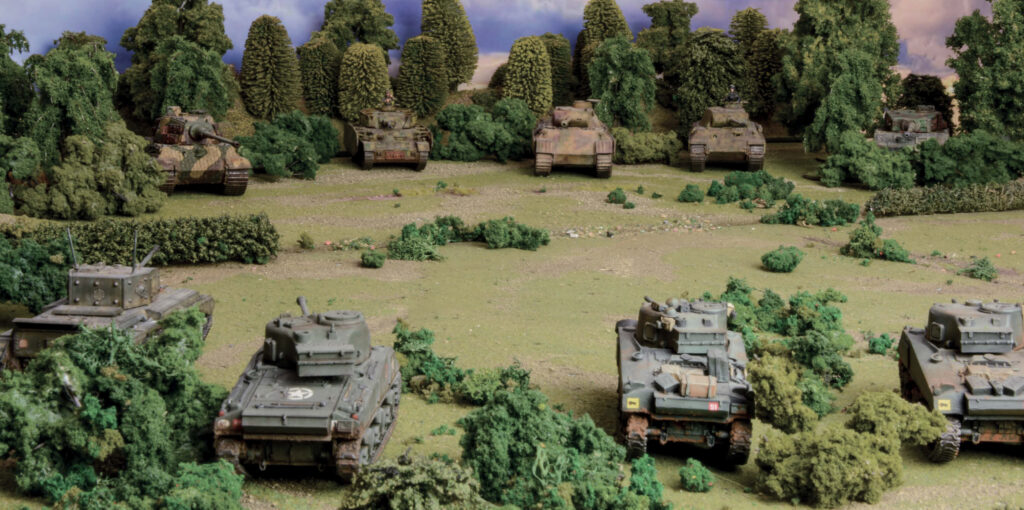
On the next page, we’ve reproduced a Tank War scenario inspired by the events of June 13th 1944.
